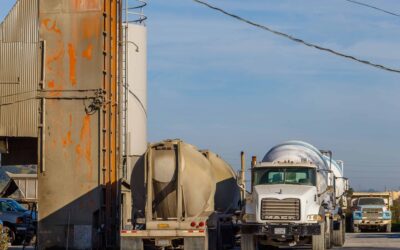Is it time to make your business more efficient? Are you tired of running a large number of legacy systems – some of which may no longer be supported by the original vendors? Do you know that one of the things that’s holding you back from being a more competitive bidder is the quality of your recycling software? If the answer to any of these questions is ‘yes’, you should be thinking about updating your systems to find a platform that will support your business to grow.
Where to start with recycling software?
There are some key principles to choosing new software. These principles apply whether you are buying accounting software, CRM software or a complete recycling software package. They will help you to define your needs and required outcomes in advance, helping you to have better conversations with vendors and, ultimately, choose the best platform for your business.
What do you need the recycling software to do?
If you run a waste and recycling business, there will be a number of key functions that your software needs to manage. As your business grows – and especially if you are running many different recycling software packages currently – your best option is to look for an integrated solution. That’s one where all the key functions are supported by a single package. This means you’re only dealing with one vendor, one set of updates or upgrades and one support route.
As every business is different, you need to run an internal assessment. You might want a new recycling software package to cover:
- Accounting, finance and invoicing
- Route management
- Customer Relationship Management
- Inbound enquiries and quoting
- Supplier management
- Contracts and service agreements
- Shift scheduling
- Weighbridge and plant management
There may also be a range of other functions you need – particularly if you are moving from a linear waste model to a circular one. Managing sales into secondary markets, for example, needs to be integrated with your other business functions.
What is your budget?
Cost is often a reason for putting off changing waste and recycling software. It’s important, however, to consider this as an investment, not a cost. You need to know what your ROI will be over time, and understand the immediate efficiency savings you’ll get from running an integrated system. So instead of ‘setting a budget’, it’s better to talk to a selection of suppliers to see what they offer and get a realistic idea of the costs – and benefits – involved.
Can you scale?
This is important if you have a strategic growth plan. It’s likely that your legacy software is holding back your growth, so changing things now will support the scaling up you want to do over the next few years. You want software that will grow with you – accommodating additional work and giving you the efficiencies you need to be competitive in your market.
What about support?
The last thing you need is a recycling software vendor who sells and then moves on. You want to build a genuine relationship with your vendor where they take the time to understand your business and your medium and long-term goals. This relationship results in the support you need to install, train, run and maintain your software.
Investing in new waste and recycling software is a serious business – so start as you mean to go on, by planning, consulting and learning as much as you can from the best suppliers. This will help you to run a smoother transition project and get the best long-term value for your money.
Choosing the right software for your business is no small feat, so if you need some more information, head to our detailed guide where you’ll find everything you need to know about waste management software. You can also take a look at our additional resources for more information on choosing the best recycling & waste management software for your business.






